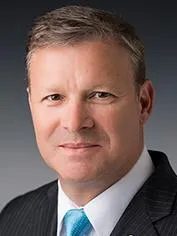By Eric Silagy, Florida Council of 100
With hurricane season finally behind us, it’s understandable to want to turn the page and not think about severe weather and potential impacts down the road. But every day Floridians aren’t experiencing a storm, they should be preparing for one.
Hurricanes Helene and Milton brought devastation to homes, businesses and lives across the Sunshine State. Thankfully, Floridians again were able to show their resolve and wasted little time helping each other and moving into the recovery phase that will take months, if not years.

The potential damage from a hurricane reaches well beyond physical structures and property into financial instability. That’s why preparation and quick recovery is critical for people’s daily lives as well as the state’s economy.
Florida’s economy is one of the largest in the world, with an annual GDP of more than $1.6 trillion. In fact, if Florida was a country our economy would rank in the top 15 largest, just behind Spain! Florida also continues to build its reputation as a hub for global commerce. A report released this year by The Florida Council of 100, a group of over 200 CEOs from across the state, laid out a roadmap to leverage regional strengths and attract up to 200,000 new jobs in higher-wage industries, further promoting long-term economic resilience and a better future for all Floridians.
Sustaining this type of continued growth and ensuring economic resilience requires a commitment to continually enhancing core infrastructure. Actions always speak louder than words, and Florida has wisely taken the long view to fund projects that help the state better protect itself from severe weather while ensuring we can meet the challenges brought on by growth.
As an example, since 2019, Florida has invested over $67 billion to improve Florida’s transportation infrastructure and thankfully more is being planned. Through the Resilient Florida program, established in 2021, Florida has allocated more than $1 billion to counties and cities to mitigate flood risks and improve stormwater management.

The state’s investor-owned electric companies in 2020 collectively committed to $20 billion in funding over a 10-year period to further harden the grid, which reduces outages, speeds restoration and keeps Florida’s economy hitting on all cylinders.
These significant expenditures and others help grow and fortify Florida for those who live and work here today and, as importantly, for future generations. But, like any home or business, to remain attractive and competitive we must continuously invest in smart projects.
While severe weather may be an inevitable part of Florida’s landscape, the commitment from the state and industries to continually fund and deliver quality infrastructure projects sets a hopeful tone for the state’s future. Clearly, there’s work to do and everything may not be perfect but let’s take a moment to appreciate what an amazingly strong position Florida is in today while redoubling our efforts and commitment to keep it that way for generations to come.
Eric Silagy is chairman of the Florida Council of 100 and retired chairman, president and CEO of Florida Power & Light. This opinion piece was originally published by the Palm Beach Post, which is a media partner of The Invading Sea. Banner photo: U.S. Airmen clear roads in Keaton Beach after the landfall of Hurricane Helene. (Staff Sgt. Jacob Hancock/U.S. Air National Guard, via Defense Visual Information Distribution Service).
Sign up for The Invading Sea newsletter by visiting here. To support The Invading Sea, click here to make a donation. If you are interested in submitting an opinion piece to The Invading Sea, email Editor Nathan Crabbe at nc*****@*au.edu.



